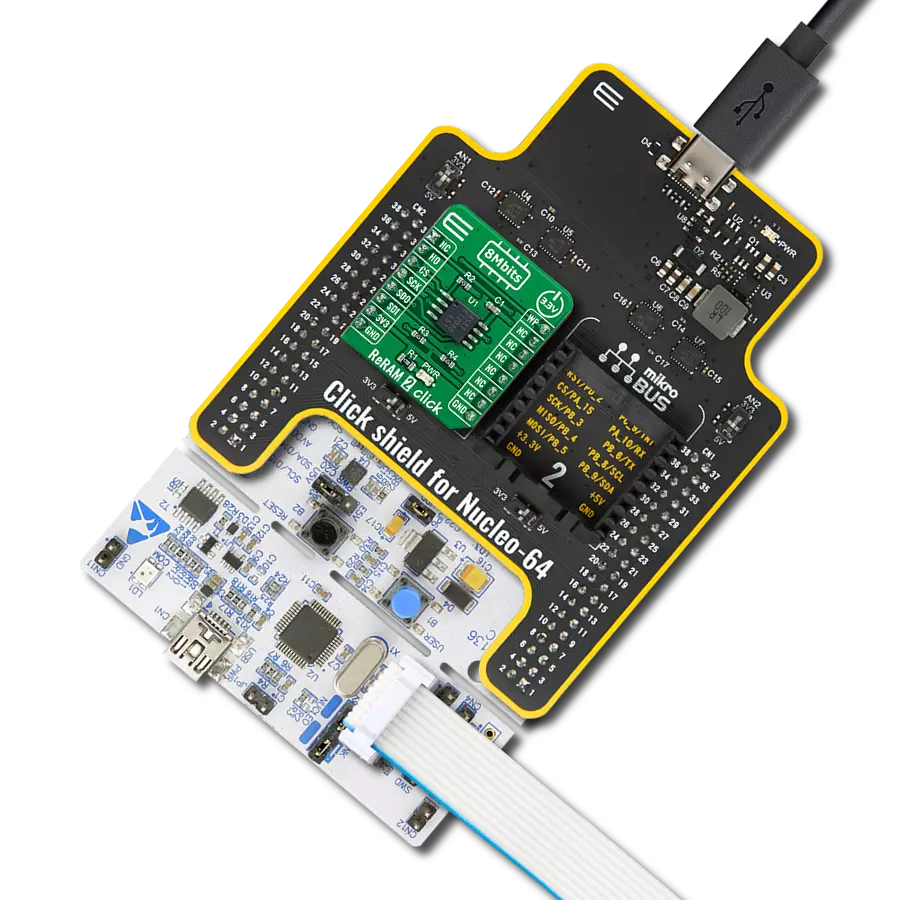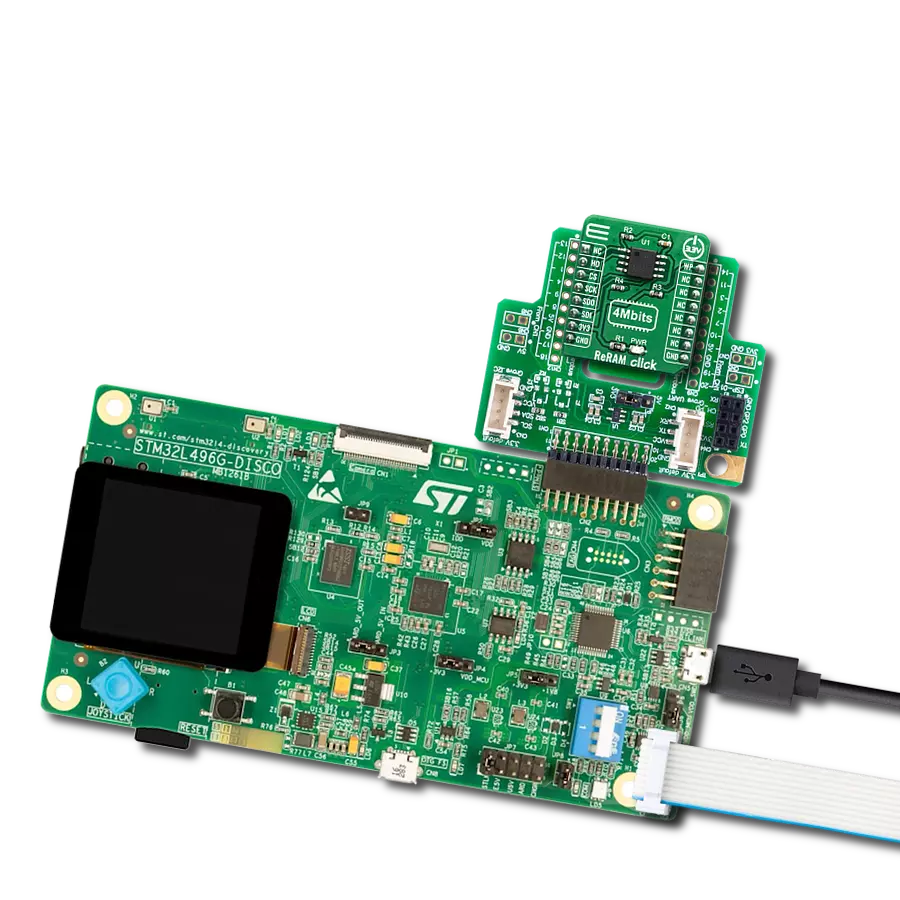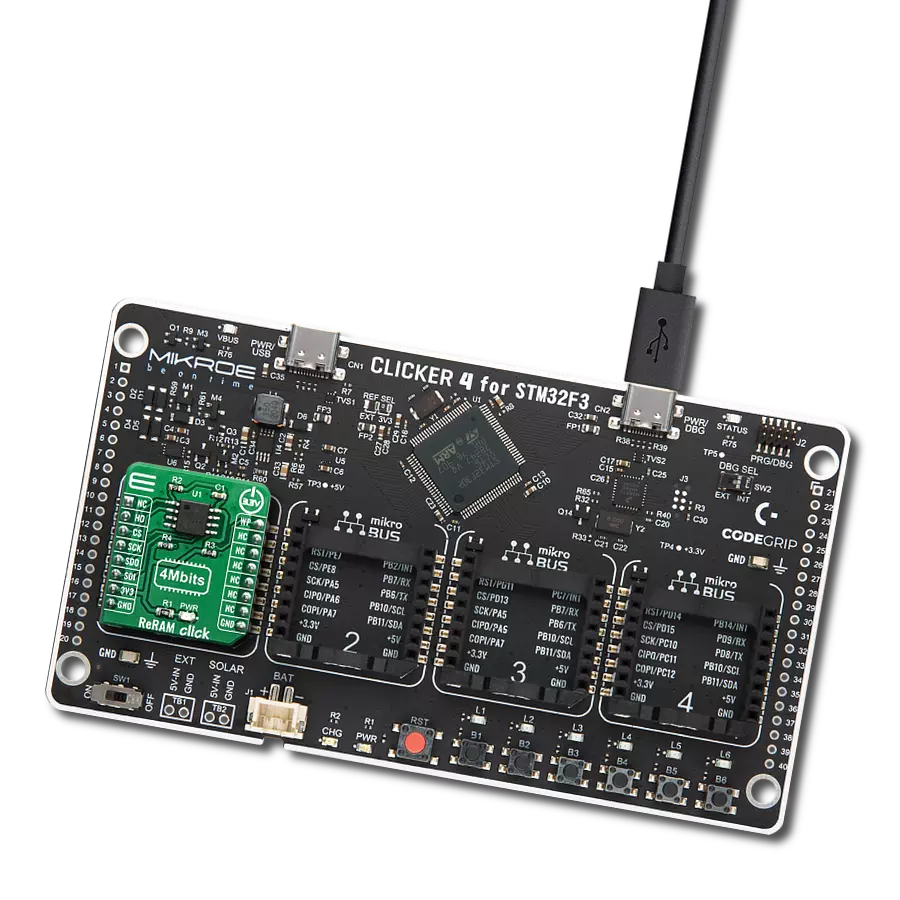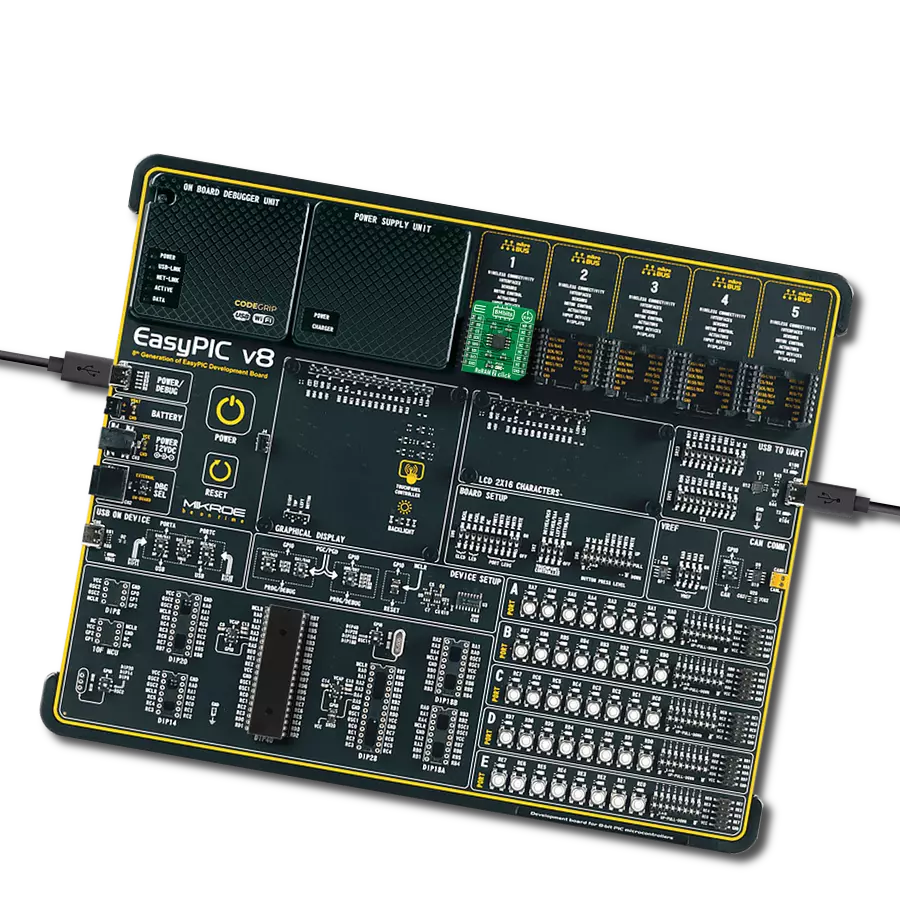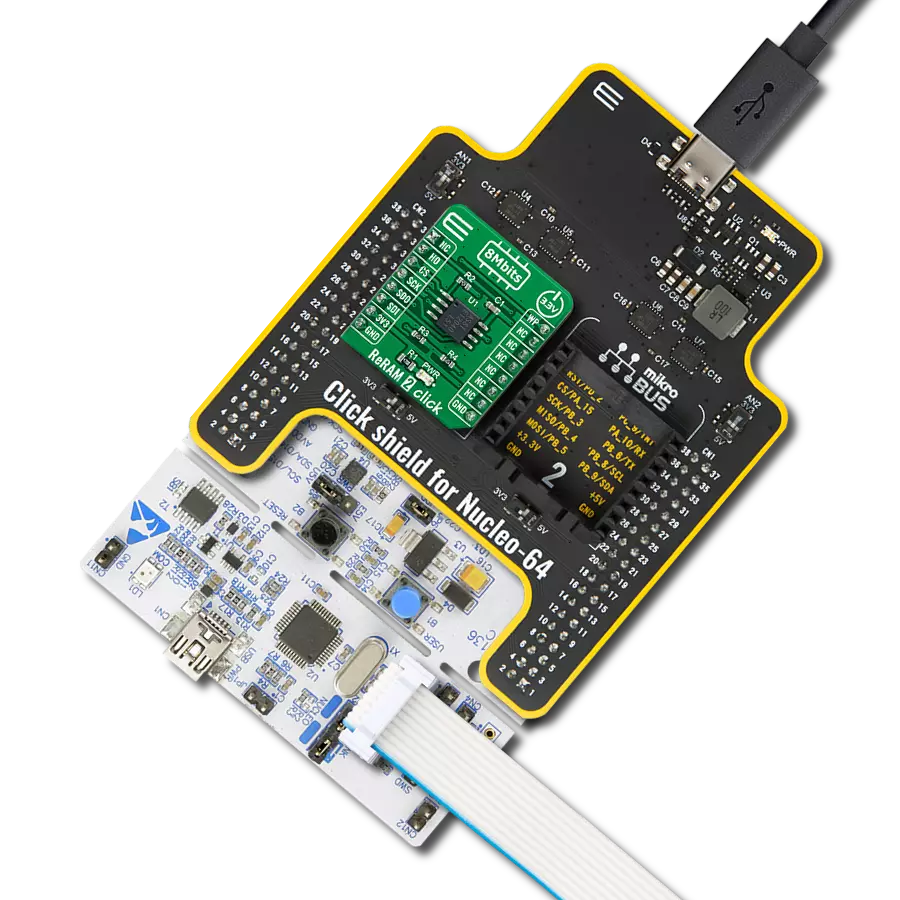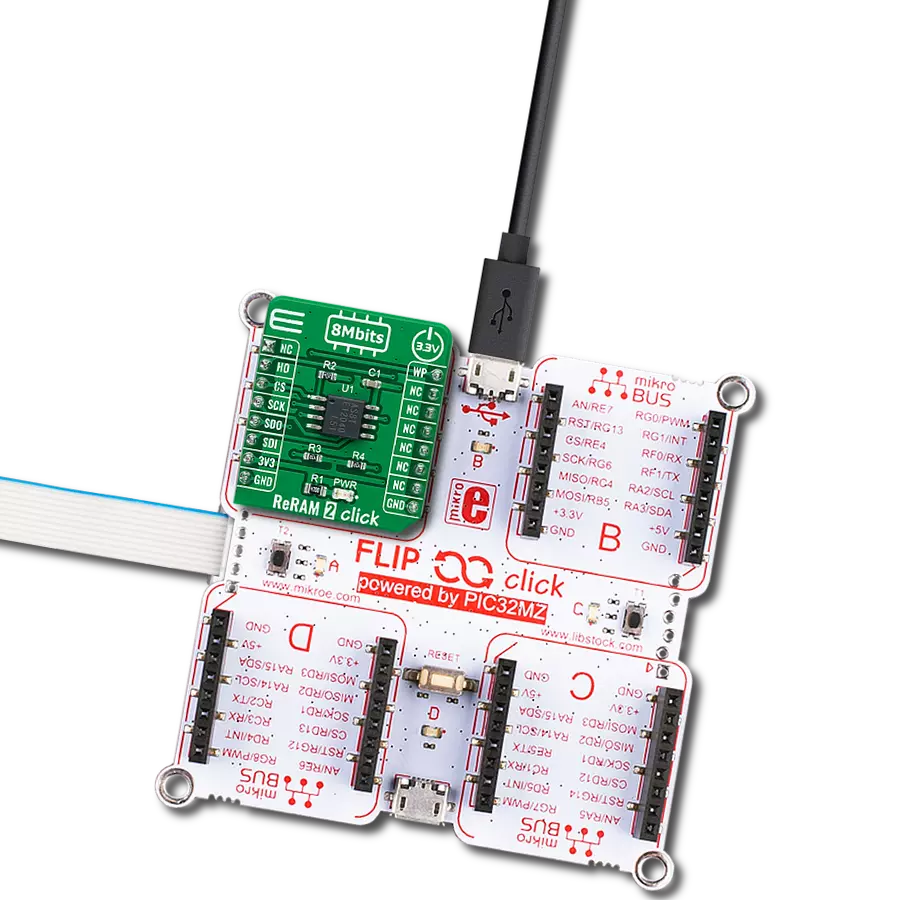Enhance your data storage capabilities with ReRAM, the innovative solution that's redefining how we store and access information
A
A
Hardware Overview
How does it work?
ReRAM 2 Click is based on the MB85AS8MT, a highly reliable 8Mbit resistive random-access memory (ReRAM) organized as 1,048,576 words of 8 bits from Fujitsu Semiconductor. It uses the resistance-variable memory process and silicon-gate CMOS process technologies to form nonvolatile memory cells. The MB85AS8MT specifies 1.000.000 endurance cycles with data retention of a minimum of 10 years, which gives the MB85AS8MT the capability to handle unlimited reads/writes to the memory. One prominent feature of the MB85AS8MT is an extremely small average current, despite its large density, for reading operations of 0.15mA at an operating frequency of 5MHz, which is only 5% of
large-density EEPROM devices. This feature enables minimal power consumption when in applications with frequent data-read operations. Besides higher write endurance, it has faster write speeds than EEPROM and flash memory, while its electric specifications, such as commands and timings, are compatible with EEPROM products. The ReRAM 2 Click communicates with MCU through a standard SPI interface that enables high clock speeds up to 10MHz, supporting the two most common SPI modes, SPI Mode 0 and 3. An additional feature of this Click board™ represents the configurable Write Protection function labeled as WP routed on the PWM pin of the mikroBUS™ socket. The WP pin protects the entire memory
and all registers from write operations and must be set to a low logic state to inhibit all the write operations. All memory and register write are prohibited when this pin is low, and the address counter is not incremented. Besides, the ReRAM 2 Click also has an additional HOLD pin, routed to the RST pin of the mikroBUS™ socket labeled as HO, to interrupt a serial operation without aborting it. This Click board™ can be operated only with a 3.3V logic voltage level. The board must perform appropriate logic voltage level conversion before using MCUs with different logic levels. Also, it comes equipped with a library containing functions and an example code that can be used as a reference for further development.
Features overview
Development board
Arduino UNO is a versatile microcontroller board built around the ATmega328P chip. It offers extensive connectivity options for various projects, featuring 14 digital input/output pins, six of which are PWM-capable, along with six analog inputs. Its core components include a 16MHz ceramic resonator, a USB connection, a power jack, an
ICSP header, and a reset button, providing everything necessary to power and program the board. The Uno is ready to go, whether connected to a computer via USB or powered by an AC-to-DC adapter or battery. As the first USB Arduino board, it serves as the benchmark for the Arduino platform, with "Uno" symbolizing its status as the
first in a series. This name choice, meaning "one" in Italian, commemorates the launch of Arduino Software (IDE) 1.0. Initially introduced alongside version 1.0 of the Arduino Software (IDE), the Uno has since become the foundational model for subsequent Arduino releases, embodying the platform's evolution.
Microcontroller Overview
MCU Card / MCU
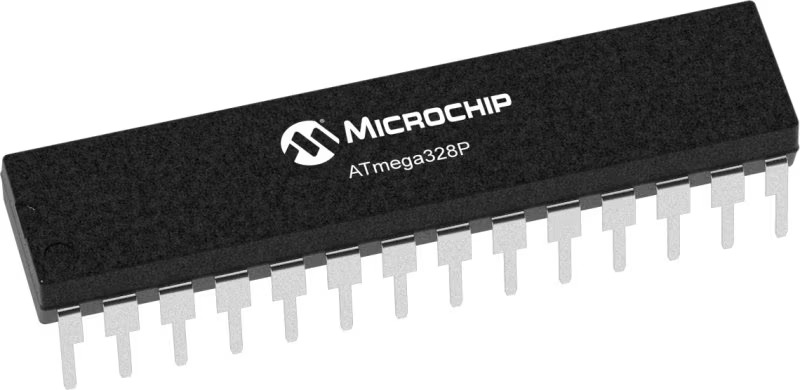
Architecture
AVR
MCU Memory (KB)
32
Silicon Vendor
Microchip
Pin count
28
RAM (Bytes)
2048
You complete me!
Accessories
Click Shield for Arduino UNO has two proprietary mikroBUS™ sockets, allowing all the Click board™ devices to be interfaced with the Arduino UNO board without effort. The Arduino Uno, a microcontroller board based on the ATmega328P, provides an affordable and flexible way for users to try out new concepts and build prototypes with the ATmega328P microcontroller from various combinations of performance, power consumption, and features. The Arduino Uno has 14 digital input/output pins (of which six can be used as PWM outputs), six analog inputs, a 16 MHz ceramic resonator (CSTCE16M0V53-R0), a USB connection, a power jack, an ICSP header, and reset button. Most of the ATmega328P microcontroller pins are brought to the IO pins on the left and right edge of the board, which are then connected to two existing mikroBUS™ sockets. This Click Shield also has several switches that perform functions such as selecting the logic levels of analog signals on mikroBUS™ sockets and selecting logic voltage levels of the mikroBUS™ sockets themselves. Besides, the user is offered the possibility of using any Click board™ with the help of existing bidirectional level-shifting voltage translators, regardless of whether the Click board™ operates at a 3.3V or 5V logic voltage level. Once you connect the Arduino UNO board with our Click Shield for Arduino UNO, you can access hundreds of Click boards™, working with 3.3V or 5V logic voltage levels.
Used MCU Pins
mikroBUS™ mapper
Take a closer look
Click board™ Schematic

Step by step
Project assembly
Software Support
Library Description
This library contains API for ReRAM 2 Click driver.
Key functions:
reram2_read_device_id- ReRAM 2 read device ID function.reram2_write_memory- ReRAM 2 write memory function.reram2_read_memory- ReRAM 2 read memory function.
Open Source
Code example
The complete application code and a ready-to-use project are available through the NECTO Studio Package Manager for direct installation in the NECTO Studio. The application code can also be found on the MIKROE GitHub account.
/*!
* @file main.c
* @brief ReRAM2 Click example
*
* # Description
* This library contains API for ReRAM 2 Click driver.
*
* The demo application is composed of two sections :
*
* ## Application Init
* Initializes SPI driver and log UART.
* After driver initialization the app set default settings,
* performs device wake-up, check Device ID,
* set Write Enable Latch command and write demo_data string ( mikroE ),
* starting from the selected memory_addr ( 1234 ).
*
* ## Application Task
* This is an example that demonstrates the use of the ReRAM 2 Click board™.
* In this example, we read and display a data string, which we have previously written to memory,
* starting from the selected memory_addr ( 1234 ).
* Results are being sent to the Usart Terminal where you can track their changes.
*
* @author Nenad Filipovic
*
*/
#include "board.h"
#include "log.h"
#include "reram2.h"
static reram2_t reram2;
static log_t logger;
static char demo_data[ 9 ] = { 'm', 'i', 'k', 'r', 'o', 'E', 13 ,10 , 0 };
static uint32_t memory_addr;
void application_init ( void )
{
log_cfg_t log_cfg; /**< Logger config object. */
reram2_cfg_t reram2_cfg; /**< Click config object. */
/**
* Logger initialization.
* Default baud rate: 115200
* Default log level: LOG_LEVEL_DEBUG
* @note If USB_UART_RX and USB_UART_TX
* are defined as HAL_PIN_NC, you will
* need to define them manually for log to work.
* See @b LOG_MAP_USB_UART macro definition for detailed explanation.
*/
LOG_MAP_USB_UART( log_cfg );
log_init( &logger, &log_cfg );
log_info( &logger, " Application Init " );
// Click initialization.
reram2_cfg_setup( &reram2_cfg );
RERAM2_MAP_MIKROBUS( reram2_cfg, MIKROBUS_1 );
if ( SPI_MASTER_ERROR == reram2_init( &reram2, &reram2_cfg ) )
{
log_error( &logger, " Communication init." );
for ( ; ; );
}
if ( RERAM2_ERROR == reram2_default_cfg ( &reram2 ) )
{
log_error( &logger, " Default configuration." );
for ( ; ; );
}
reram2_wake_up( &reram2 );
Delay_ms ( 100 );
if ( RERAM2_ERROR == reram2_check_device_id( &reram2 ) )
{
log_error( &logger, " Communication Error. " );
log_info( &logger, " Please, run program again... " );
for( ; ; );
}
reram2_send_command( &reram2, RERAM2_CMD_WREN );
Delay_ms ( 100 );
log_info( &logger, " Application Task " );
memory_addr = 1234;
log_printf( &logger, "\r\n Write data : %s", demo_data );
reram2_write_memory( &reram2, memory_addr, &demo_data[ 0 ], 9 );
log_printf( &logger, "-----------------------\r\n" );
Delay_ms ( 1000 );
}
void application_task ( void )
{
static char rx_data[ 9 ] = { 0 };
reram2_read_memory( &reram2, memory_addr, &rx_data[ 0 ], 9 );
log_printf( &logger, " Read data : %s", rx_data );
log_printf( &logger, "-----------------------\r\n" );
Delay_ms ( 1000 );
Delay_ms ( 1000 );
}
int main ( void )
{
/* Do not remove this line or clock might not be set correctly. */
#ifdef PREINIT_SUPPORTED
preinit();
#endif
application_init( );
for ( ; ; )
{
application_task( );
}
return 0;
}
// ------------------------------------------------------------------------ END
Additional Support
Resources
Category:ReRAM






















